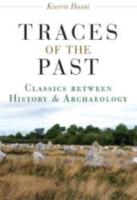
Michigan (2016) h/b 246 pp $70 (ISBN 9780472119929)
One commendable aim of this book is ‘to bridge the disciplinary divide that separates archaeologists, historians, and philologists’ (1). Uniting the three disciplines, Bassi argues, is their confrontation with the past as something that is no longer (or only partially) visible, and the book traces this confrontation and its consequences in the Greek narrative tradition (16). A key player in this venture is what Bassi terms protoarchaeological narrative: ‘narratives in which the past is constituted out of or in response to what is visible (or not) in the present’ (2); ‘narratives in which visual descriptions of objects and events put the possibility of seeing the past in competition with the practice of reading about it…in which the act of reading texts is linked with conceptualizing the past as a receding visual field’ (7). These definitions are not the easiest things to grasp, but the concept is much repeated as central to the book, and familiarity breeds comprehension. At the more accessible end of the spectrum is Bassi’s conclusion that the past ‘is produced not in the unbridgeable gap between empirical observation and linguistic representation but in their dialogic interplay’, and ‘this interplay is the defining feature of protoarchaeological narratives’ (201).
Each chapter focuses on a canonical Greek work: Hesiod’s Theogony (Chapter 1), Homer’s Iliad (Chapter 2) and Odyssey (Chapter 3), Herodotus’ Histories (Chapter 4) and Aristophanes’ Frogs (Chapter 5). The book thus spans the archaic and classical periods, mythological and historical time, and oral and literate genres, and Bassi hopes ‘to show how the promise of seeing the past transcends these conventional categories’ (17). Perhaps the most challenging object of Bassi’s study is the Achaean wall (Chapter 2): star of a disappearing trick that has forever vexed Homer’s audiences. Bassi uses this elusive item to reflect on ‘the temporal, epistemological, and ontological categories that define protoarchaeological narratives’ (18), and draws connections from the wall to wider themes such as heroic kleos and the relationship between historia and poiesis. The wall’s disappearance (in)famously takes place in a hypothetical past, confusing the issue even further, and Bassi harnesses this temporal anomaly in support of her argument that ‘the past constitutes a receding visual field in the Greek narrative tradition’ (41).
This is a theoretically sophisticated book, but it is not too impenetrable to be of relevance to the student. Its main use in teaching lies, I suggest, not in the case studies and close readings (insightful as they are), but in the new interdisciplinary methodologies proposed. These approaches are articulated primarily in the introduction which sets out the argument for protoarchaeological narrative, and the epilogue which focuses on the metaphor of ‘reading the past’, particularly as used in archaeological scholarship. Rather than being confined by disciplinary boundaries in our teaching, and by the tools traditionally associated with those disciplines, we might consider accessing the classical world through a focus on materiality: a focus that can—as this book does—take us from archaeological theory to the philosophy of history, from literary theory to heritage studies, from text to artefact and back again. According to Bassi, the question we should be asking ourselves is not how objects and texts are similar or different, nor which is the chicken and which the egg—but ‘why the distinctions between objects and texts, including the disciplinary investment in those distinctions, have been formulated’ (201).
Dr Lilah Grace Canevaro—The University of Edinburgh
